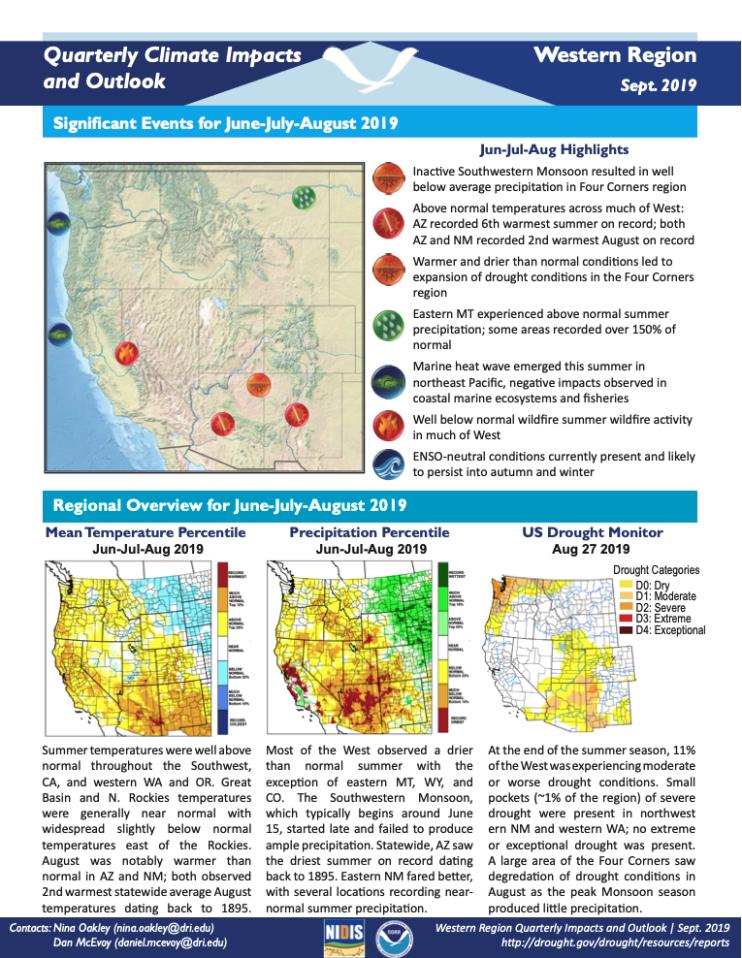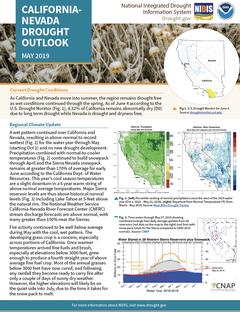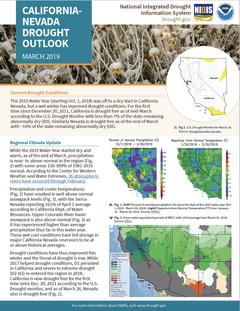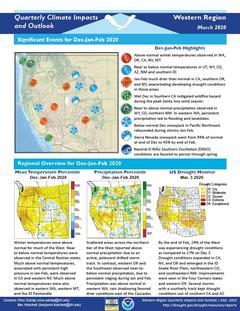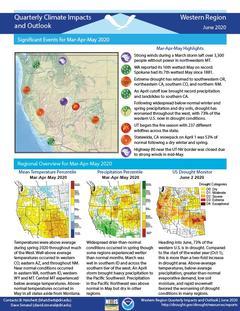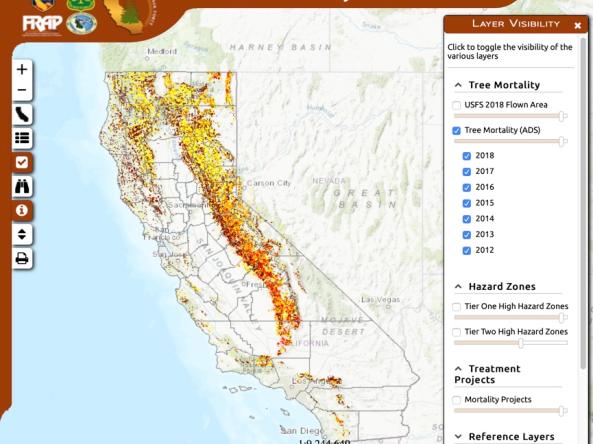Quarterly Climate Impacts and Outlook for the Western Region for June – August 2019. Dated September 2019.
Quarterly Climate Impacts and Outlook for the Western Region for March – May 2019. Dated June 2019.
Spring temperatures were variable across the West. The North Pacific storm track remained active through the spring season bringing above normal precipitation to much of the West.
Current Drought Conditions
As California and Nevada move into summer, the region remains drought free as wet conditions continued through the spring. As of June 4 according to the U.S. Drought Monitor, 4.32% of California remains abnormally dry (D0) due to long term drought while Nevada is drought and dryness free.
Current Drought Conditions
The 2019 Water Year (starting Oct. 1, 2018) was off to a dry start in California-Nevada, but a wet winter has improved drought conditions. For the first time since December 20, 2011, California is drought free as of mid-March according to the U.S. Drought Monitor with less than 7% of the state remaining abnormally dry (D0). Similarly Nevada is drought free as of the end of March with ~10% of the state remaining abnormally dry (D0).
Quarterly Climate Impacts and Outlook for the Western Region for December 2018 – February 2019. Dated March 2019.
Persistent stormy conditions helped to maintain near-to-below normal temperatures across much of the West this winter. Abundant precipitation and moderate temperatures helped alleviate drought conditions in large areas of the West.
Quarterly Climate Impacts and Outlook for the Western Region for December 2019 – February 2020. Dated March 2020.
Winter temperatures were above normal for much of the West. Near to below normal temperatures were observed in the Central Rockies states. Scattered areas across the northern tier of the West reported above normal precipitation due to an active, poleward shifted storm track. In contrast, western Oregon and the Southwest observed near-to-below normal precipitation, due to persistent ridging during January and February.
Quarterly Climate Impacts and Outlook for the Western Region for March – May 2020. Dated June 2020.
Temperatures were above average during spring 2020 throughout much of the West. Widespread drier-than-normal conditions occurred in spring though some regions experienced wetter than normal months.
While there is a strong connection between drought and wildfire in the western United States, how drought influences the post-wildfire environment is less well-understood, especially at shorter (1-3 year) timescales. The hazards posed by post-fire flooding and debris flows in burned landscapes depends on burn severity, underlying geology and topography, and vegetation recovery following the fire.


